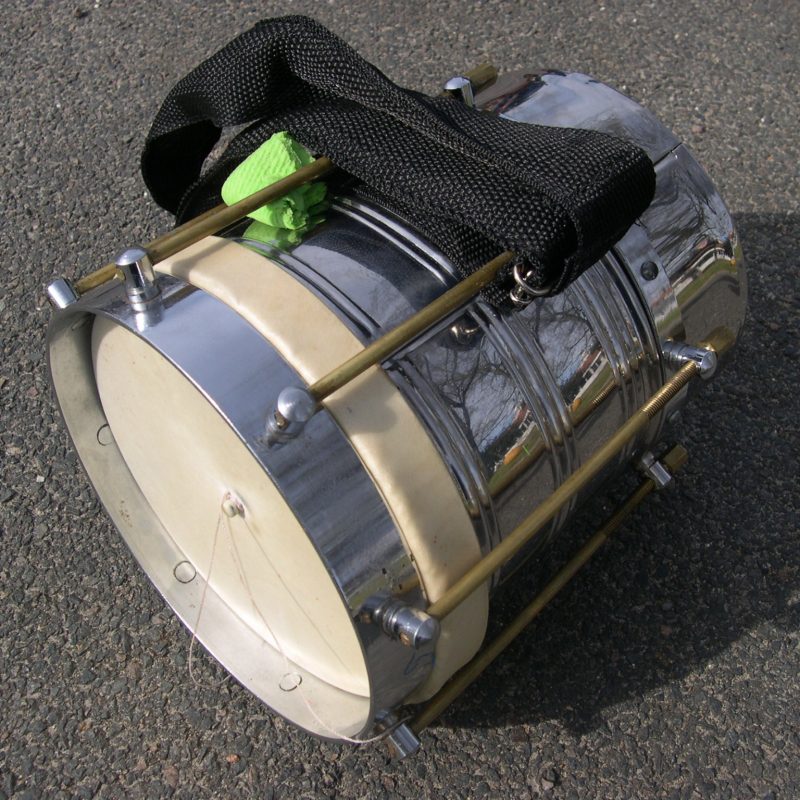It’s been a while since our last posting in our blog series – Spotlights & Histories of “Unusual” Musical Instruments. Our featured instrument for this posting will be the cuica (pronounced kweeka).

The cuica is from Brazil and falls in the friction drum category. This simply means that the sound from the drum is created by the player causing the head of the drum to vibrate with friction. In the case of the cuica, the player creates friction by rubbing a moistened cloth or sponge back and forth along a thin wooden stick (made from bamboo) that protrudes through the head (usually 6-10 inches in diameter) of the drum and through the body (made from metal or gourd). This motion creates the drum’s sound, which is then controlled by applying varying amounts of pressure to the head of the drum with the other hand. Changing the amount pressure on the stick can also affect the pitch and timbre of the drum. The cuica produces a high-pitched squeaky sound, and is sometimes referred to as the “laughing gourd.”
The origins of the cuica are disputed by many, but it has been traced to Bantu slaves, Spain, and Muslim traders. One of the more interesting origin theories is that the drum was used in Africa for lion hunting. The hunters were able to lure the lions with it because the sound of the drum imitates that of a wounded animal. Today, the cuica plays a large rhythmic role in samba music.
https://www.youtube.com/watch?v=qT8Ee1M8O8A
Love this instrument? Good news – you can easily make your very own! All you need is a coffee can, a wooden vegetable skewer, some duct tape, scissors, a can opener, and a sponge.
Instructions:
1. Remove the bottom of the coffee can with the can opener.
2. Remove the lid of the coffee can and place a square inch (or bigger) of duct tape in the center of the plastic lid on both sides.
3. Poke a hole in the center of the plastic lid with scissors, a knife, or a similarly sharp object.
4. Stick the wooden vegetable skewer through the hole in the plastic lid. The pointed end of the skewer should be sticking up through the top of the lid.
5. Secure the skewer by wrapping a piece of duct tape (0.5 inch by 3 inches) around the skewer at a point about 1-1.5 inches from the end of the skewer. Wrap another piece of duct tape (same measurements as before) around the short tip of the skewer protruding through the top of the lid.
6. Place the lid back on the coffee can.
7. Wet your sponge.
8. Have fun!
Check out the cuica that Emily made. Works like a charm!



Leave a Reply